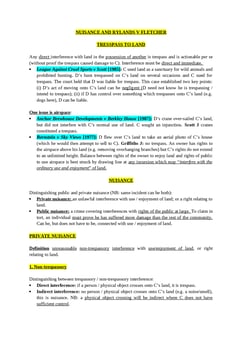Mersey Docks & Harbour Board v Coggins & Griffiths [1947] AC 1
Judgement for the case Mersey Docks & Harbour Board v Coggins & Griffiths
Table Of Contents
KEY POINTS
In cases of negligence transference, when an employee works for a third party, the legal responsibility for their actions shifts from the regular employer to the hirer.
Liability determination depends on factors like the incident's circumstances, the driver's actions, and the contractual terms between the regular employer and hirer.
The legal doctrine of Respondeat Superior holds employers vicariously liable for their employees' actions within the scope of employment.
Specific terms defining the scope of work, driver responsibilities, and insurance provisions significantly influence legal outcomes in cases involving negligence and injury while hiring a mobile crane and driver.
FACTS
-
Mersey Docks And Harbour Board (‘The Harbour Authority’) leased a mobile crane to a stevedores firm to load a ship.
As part of the arrangement, the Harbour Authority provided a craneman for the operation.
This craneman was directly employed, paid, and subject to dismissal by the harbour authority, despite the general hiring conditions indicating that such cranemen should be considered the servants of the hirers.
-
During the operation, the craneman, under the immediate direction and control of the stevedores, negligently drove the crane, resulting in injury to a third person.
It's important to note that although the stevedores had immediate control over the movement of each piece of cargo, they lacked the authority to dictate how the crane should be operated or manipulate its controls.
In response to the incident, the injured party filed a lawsuit seeking damages against both the Harbour Authority and the stevedores.
The legal dispute revolved around the circumstances of the crane operation, the employment relationship between the Harbour Authority and the craneman, and the specific details outlined in the hiring conditions governing the mobile crane use.
JUDGEMENT
-
In the judgment, it was held that the Harbour Authority, being the general permanent employer, bears liability in the case.
The Harbour authority failed to meet the significant burden of proof required to shift the prima facie responsibility for the craneman's negligence to the stevedores.
The craneman, in the course of his driving, was exercising discretion granted to him by the Harbour authority, and this exercise of discretion was a key factor in the negligence.
Determining which party was the employer responsible for the craneman's negligence was not dictated by any explicit agreement between the Harbour Authority and the stevedores.
-
The court emphasised that the Harbour Authority, as the general permanent employer, retained a fundamental responsibility, especially considering the discretion vested in the craneman during the operation.
As a result, the liability for the negligent actions of the craneman was attributed to the harbour authority.
COMMENTARY
-
This legal scenario involves the leasing of a mobile crane by a Harbour Authority to a stevedores firm for ship-loading, complicated by the employment of a craneman directly by the Harbour Authority.
The discrepancy between hiring conditions and employment structure highlights nuanced liability issues.
Despite being under the stevedores' control, the craneman's exercise of discretion granted by the Harbour Authority played a crucial role in the negligence.
-
The court scrutinized the Harbour Authority's failure to shift responsibility for the craneman's negligence to the stevedores, emphasizing the primary responsibility of the general permanent employer.
The absence of a clear agreement on the responsible employer added complexity.
The court attributed liability to the Harbour Authority, recognizing its overarching responsibility and the importance of the craneman's discretion.
This case illuminates the intricacies of legal liability in situations involving shared responsibilities, contractual agreements, and the exercise of discretion within an employment relationship.
ORIGINAL ANALYSIS
Plaintiff was injured by X who was operating a crane. X was employed and the crane owned by Defendant, who had let both to Y.
Plaintiff sued Defendant and HL allowed Plaintiff’s claim, saying that Defendant was liable rather than Y.
Lord Macmillan
It is possible for the general employer to show that the employee had been transferred the servant’s services for a particular occasion to another party, so as to make the other party liable, but the burden is on the general employer and here he had failed to show this.
For Further Study on Mersey Docks & Harbour Board v Coggins & Griffiths
Need instant answers? Our AI exam tutor is here to help.
Ask questions 🙋 Get answers 📔 It's simple 👁️👄👁️
Our AI is educated by the highest scoring students across all subjects and schools. Join hundreds of your peers today.
Get StartedSimilar Cases
Related Product Samples
These product samples contain the same concepts we cover in this case.
| Tort Law | Products Liability Notes (17 pages) |
| Tort Law | Vicarious Liability Notes (17 pages) |

 Since 2010, Oxbridge Notes has been a trusted education marketplace, supplying high-quality materials from top achievers at universities like Oxford, Cambridge, LSE, Harvard, and Yale.
Since 2010, Oxbridge Notes has been a trusted education marketplace, supplying high-quality materials from top achievers at universities like Oxford, Cambridge, LSE, Harvard, and Yale.